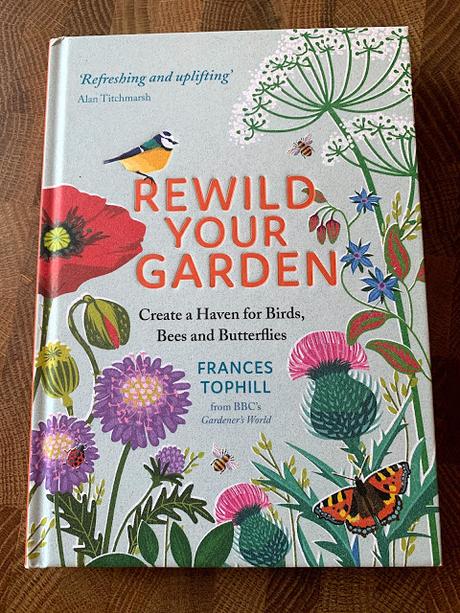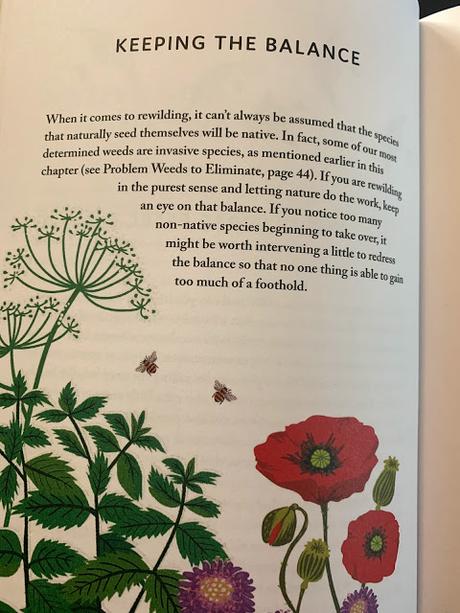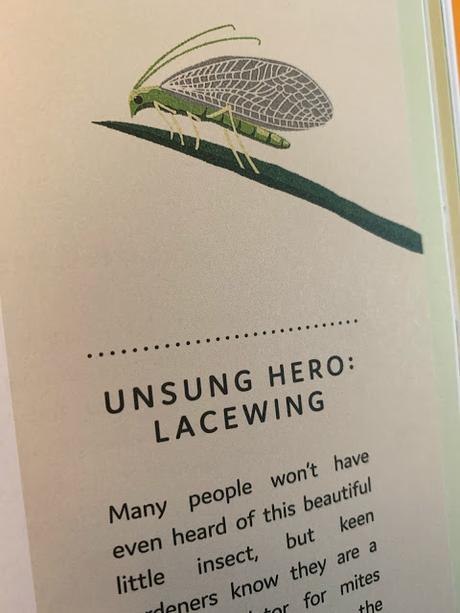Regular readers will know that I have what I call 'The Wild Garden' at the top of my garden. It is about a quarter of the garden space in total and I have always been very glad to have made the decision to let it grow as it pleases. I mow paths through it, I do control some of the taller nettles but generally it does what it likes. When I was asked if I wanted to review Rewild Your Garden by Frances Tophill I said yes immediately. It is definitely something I am very interested in. I have to be clear I have not paid for this book, but I have not been paid to write this review, no one is approving the content and my words and opinions remain, as ever, my own.

This is a fantastic book. It is not huge but also not small. It is a good size to pick up and put down easily. It is also packed full of information. The chapters and sections are not long but are full of what you need to know so you very quickly get what you need. This book is concise, over-wordy and does not over complicate the subject. Quickly and efficiently Frances gets her message across.
Frances talks us through the garden ecosystems and the importance of layers, from beneath the soil to climbing plants. As you would expect Frances talks to us about the impact of using peat and chemicals in our gardens and that even feeds we might use can have unintended consequences such as feeding a lawn may make it lush and green but will also crowd out wildflowers that we might want to encourage.

The style of the book is bright and cheerful (a bit like Frances herself if you have watched her presenting on Gardeners World). It is illustrated throughout by Jo Parry and the design is by Tokiko Morishima and I have to say that the result is superb.

There are sections on Unsung Heroes and Garden Favourites and why we should appreciate them. There are discussions about the use of colour and flowers in our gardens and why and how pollinators use them. It is a pragmatic book, so in the section on using native plants Frances says that whilst our wild flowers are to be treasured some of them are often regarded as weeds. For some gardeners weeds are difficult to embrace (I think bindweed is beautiful but I am not going to encourage it) and Frances says that just because a plant is non-native does not mean it is less valuable for our pollinators. Of course you have to take care not to introduce invasive species into the garden and actually the overwhelming message of this book I think is about balance. It is about balancing what we want from our gardens and what our gardens and wildlife want from us.
This is a practical and beautiful read and Frances gets her message across effectively. I think it would suit people new to gardening and those who have been gardening for years. I also think it would be attractive to the younger generations of gardeners.
I not only enjoyed reading this book, I know I will enjoy reading it again and again. It is one I intend to have to hand on my bookshelf for easy dipping into.

